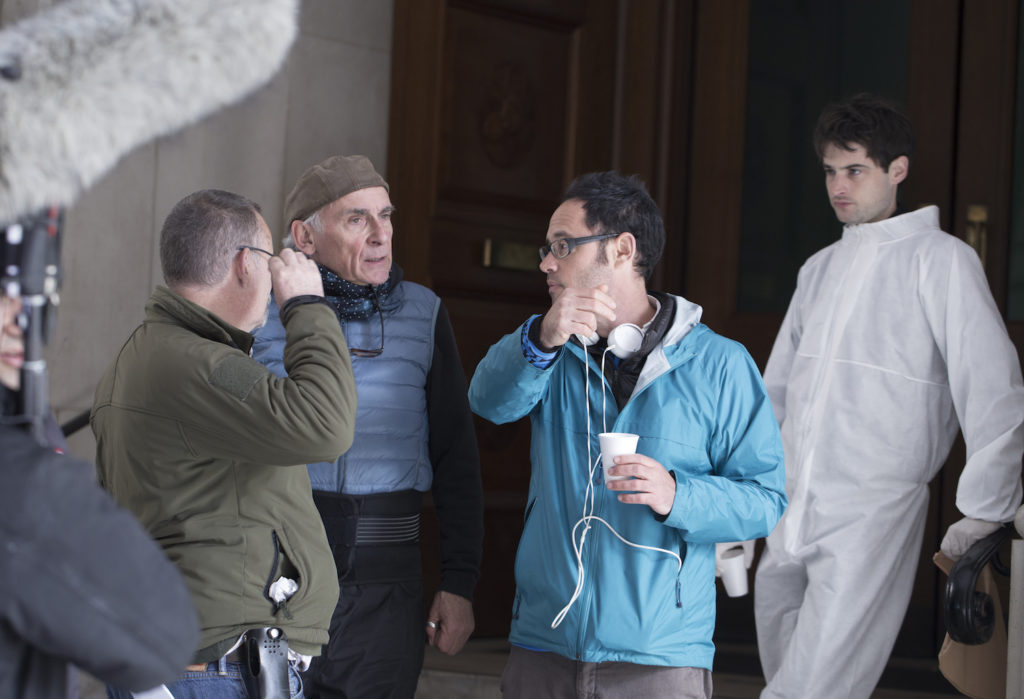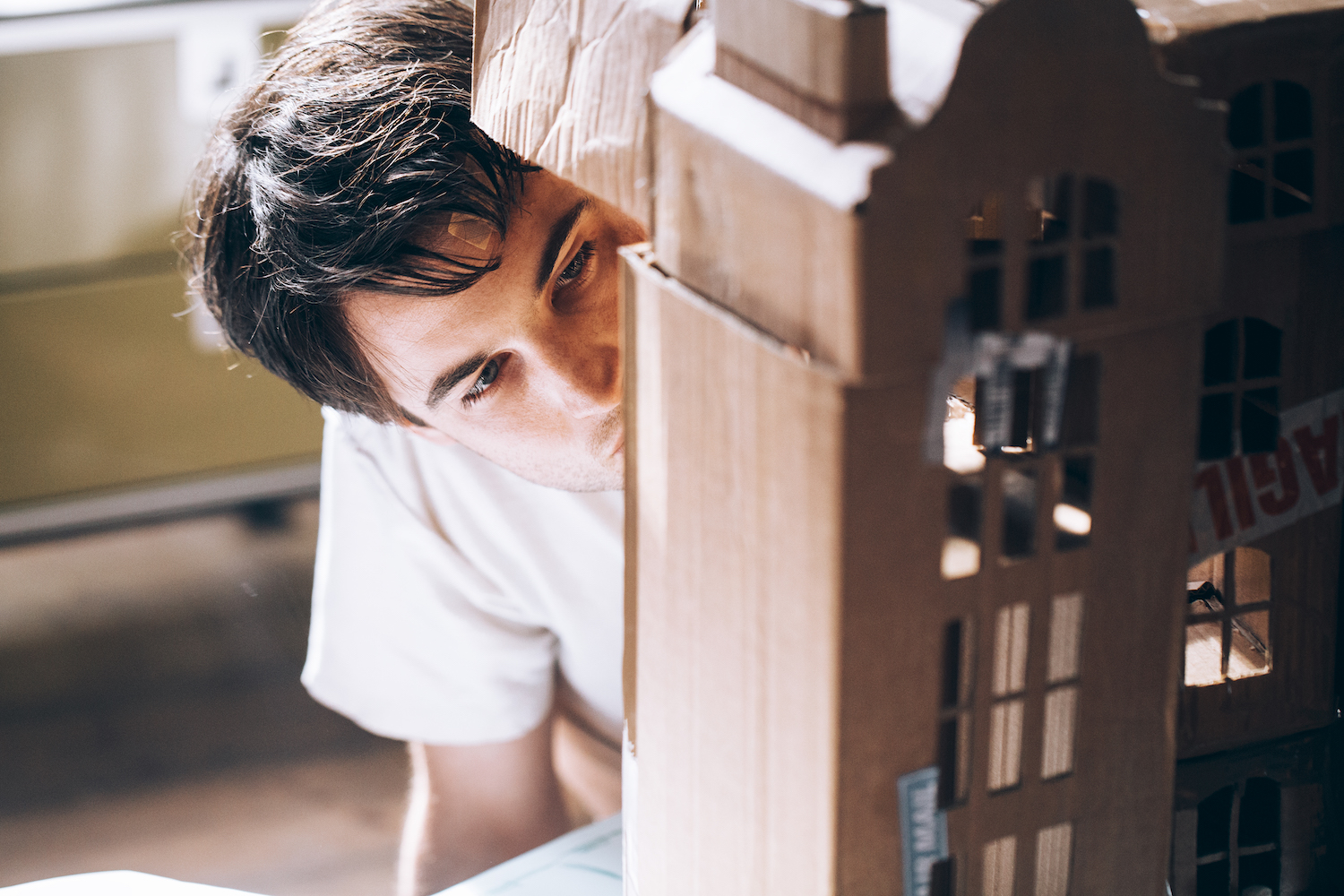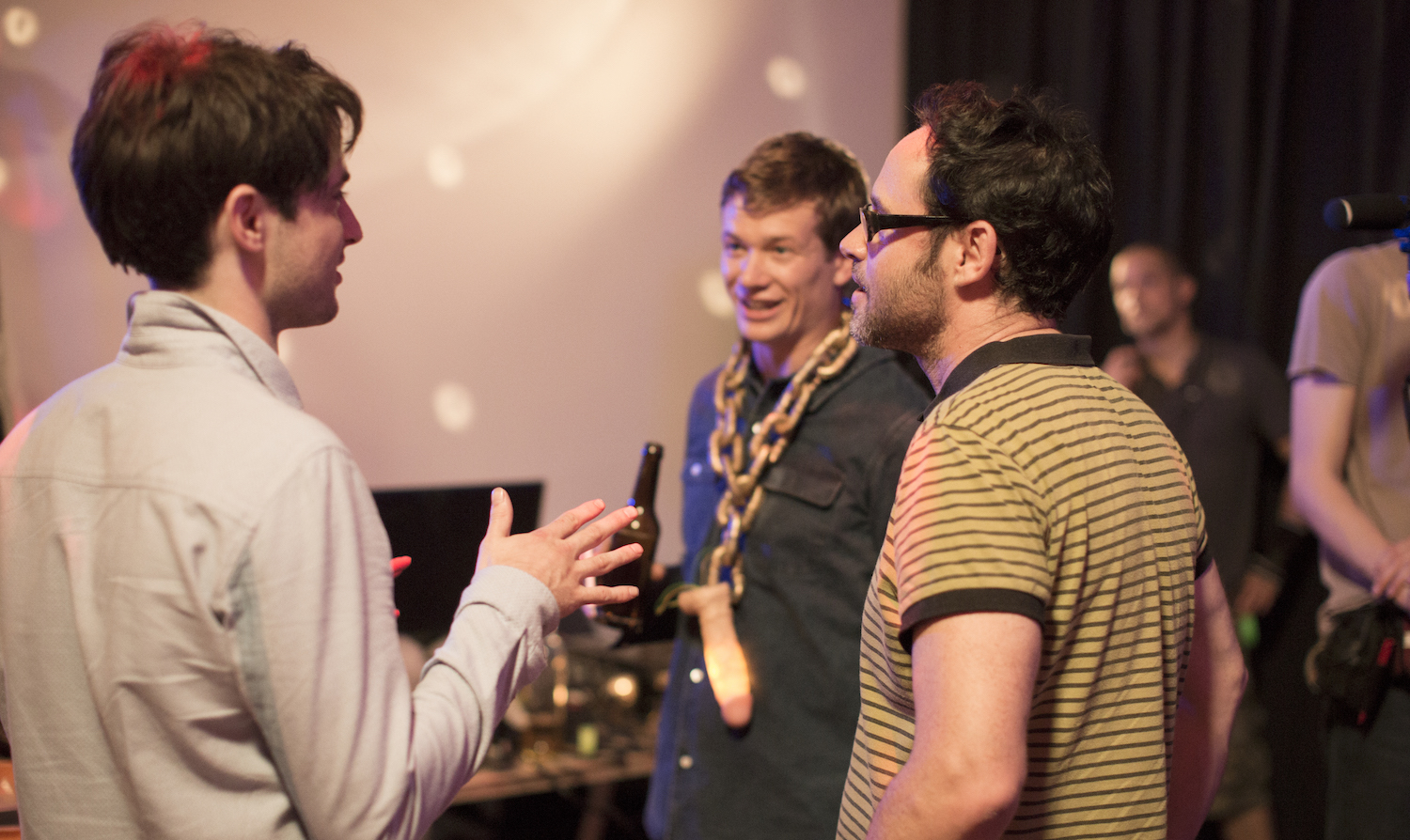People
Omer Fast Opens Up About His Feature Film Debut, ‘Remainder’
It's about looking at the symptoms, not the cause.

It's about looking at the symptoms, not the cause.

Lorena Muñoz-Alonso

Having established himself as one of the most talented and respected contemporary artists working with moving image, Israeli-born, Berlin-based Omer Fast has recently premiered his first feature film in cinemas, an adaptation of Tom McCarthy’s revered debut novel, Remainder.
But despite its commercial release and the relatively bankable leading actor, Tom Sturridge (of Far from the Madding Crowd and On the Road fame), don’t expect an easily consumable feature. More Steve McQueen, maybe even Chantal Akerman, than Sam Taylor-Johnson, Fast’s cinematic debut is perfectly consistent with his artistic production. While telling a relatively conventional story in a length usually associated with cinema releases, the resulting feature eschews traditional narrative, using a circular structure that brings to mind Fast’s looped video works.
Remainder tells the story of Tom, the amnesiac survivor of a terrible accident, played masterfully by Sturridge, who spends the vast amount of compensation money to recreate, in an increasingly intricate and unhinged manner, the faint, wafting memories in his head in a attempt to recover his past and identity.
McCarthy’s story is a perfect fit for Fast, as it deals with many aspects that he has repeatedly tackled in his oeuvre: repetition, re-staging, re-enactment, role playing, and how fiction can help us to understand and cope with truths.
Coinciding with the general release of Remainder in the UK (where it was first screened last year as part of the London Film Festival), artnet News met with Fast in London to discuss the highs and lows of his first incursion into commercial cinema, his interest in the way we all perform for our own selves, and why he doesn’t like to watch and revisit his work.

The actor Tom Sturridge stars in Omer Fast’s Remainder. Courtesy of Soda Pictures.
Were you a fan of the novel Remainder before this journey began?
Actually, the book was recommended to me by a journalist with whom I was doing an interview about my work and he said, “you should read this book, I think it will make a lot of sense to you. It’s very relevant to your work.” And he was right. So when I read the book of course I was amazed and I got in touch with Tom to propose a collaboration or talking about adapting some part of the book into an artwork. And that’s how it all began.
The rights of Remainder had been auctioned at that point, but we talked about it and he said ‘well, it’d actually be great if you did it, but the rights have been auctioned.’ A few months later he decided to ask me to adapt the book into a script and we started working on it. One thing led to another, and it was a sort of an accident.
There’s a striking similarity between the themes that novel explores and the subjects present in your work: staging, repetition, trauma… How was it like working with McCarthy, who comes from a very different background, the literary world?
I didn’t know Tom personally before we started adapting the novel. We met for a few days right at the very beginning in order to make sense of the book together, to map out the book visually, and I got to know him quite well while working on this. We’ve become good friends, and we still are, happily, even after I ruined his lovely book [laughs]. It was very easy for us get along.

Tom Sturridge (right) in Omer Fast’s Remainder. Courtesy of Soda Pictures.
You’ve been successfully making and showing your work within the art world for a few years now. How did you feel about entering the feature film distribution system? Did you do it as one-off experiment or a proper transition to filmmaking, like for example Steve McQueen?
I’d say it was both. It’s definitely an experiment, but also something that I found extremely seductive, mostly because the budget involved allowed me to create a world that’s a bit bigger and bit deeper than the world that I’m usually able to create for my art projects. Anybody who works trying to realize ideas into something visual is going to be seduced by the possibility of having more means to do so, and at the moment [the film industry] is where those means are for me.
It is certainly a different system and a different economy [than the art world]. It’s the first time I’ve worked in it and it might be the last. I’m very comfortable as an artist and I like the short format that I am able to work with in the art world. There’s a huge amount of freedom and there’s a very open space for experimentation, which may and may not be the case for cinema, specially if you are just starting out. I find it a bit more restrictive than what I’m used to in the art world. There’s a few critical differences between them.
What was the biggest challenged you faced?
There were several challenges, for example the length of it. I’m used to a six-month turnaround, never a year or over a year, on projects. So my projects are in a sense quicker and more of a snapshot. Remainder was a much longer project, and on the other hand, much more involved with other people’s opinions and with more impact on other people.
I guess you have less control when you are working as part of such a big project …
Well, let’s say control was an issue, and it’s never an issue when I am making my own work.

Omer Fast (right) with the actors Tom Sturridge (left) and Ed Speleers (center) on the set of Remainder. Courtesy of Soda Pictures.
Did you feel any pressure to adapt what you do to make it appealing to a broader public?
I didn’t feel I was being pushed as such, but there are people investing a lot of money in this film, and they don’t do it in the same way people invest money in the art world, either by spending taxpayer’s money irresponsibly or spending private money because they are crazy. Here, there’s some semblance of accountability and that means a lot of involvement. These are things that I wasn’t used to.
After this whole process, what’s your opinion of the film?
I haven’t seen it since we finished editing it. The film is no different than any of my work, and I don’t sit and watch my work. I have a strong sense that these things are time capsules, in a way, that they are magical things that capture my energy and my time, and because of that they are invested with a kind of voodoo energy that I don’t get to experience but other people do. Whether it makes them happy or not is another question. But I don’t tend to revisit these things. They have too much power, in that regard. I prefer to move on to another project.
The compulsion to re-enact trauma, so present in your work, is a phenomenon that greatly preoccupied Freud and many of his followers. How informed by psychoanalytical theories would you say your work is?
My work is definitely not an illustration of theory, that’s for sure. I think my process is maybe more intuitive than that. It is extremely connected to those ideas, but it works in a sort of parallel way, ideally. I’m certainly not thinking, “well this would be a good spot to talk about screen memories,” or any number Freudian constructs. I am aware of all this much more so in retrospect. When I look at my work with more time and more perspective, I understand that there are some issues that I tend to keep coming back to, and I that I’m possibly repeating myself, and that I’d better start thinking about and looking at other things [laughs]. But you can’t help bringing your issues to it.
But I am not so sure trauma is the key issue. For me the key is thinking about language, behavior, and communication in ways that are contrived, theatrical, performance related. We all know that we are performing in some respect when we are engaging with other people, but I am really interested in people’s performances, and how they are actually performing for themselves, not necessarily for other people. So my work keeps coming back to that.

The actor Tom Sturridge in Omer Fast’s Remainder. Courtesy of Soda Pictures.
But the protagonists of most of your works tend to have been through a traumatic experience or major event, like in Remainder, or 50 Feet is the Best, The Casting, or Continuity.
Yes, sometimes. But in other works I do portraits of people involved in different industries in the US, and very often their work is in a sense invisible, taboo, or secretive. So the performers that are shown in one of my pieces [Everything That Rises Must Converge] have not been through traumatic experience, but through a gangbang together, and we watch them do that and then we see their lives, and how they take a very private activity, such as having sex, and they do it as a form of work in a very public way and in a way that is also recorded, so they are at the intersection of a lot of things that are interesting for me: the private and the public, the recorded, the mediated, and the more personal and intuitive. So it doesn’t have to come down to trauma, it actually comes down to work, I think.
What are you working on at the moment?
I have expanded Continuity, which I made for Documenta 13 in 2012, and it’s going to have a small cinematic release in the fall in Germany, initially. We are using the footage we shot in 2012, which was 40 minutes long, but we are also expanding the story into a feature film, which is 85 minutes long. It’s a more kaleidoscopic look at the story, there’s more characters.
So we do get to find out what happened to Daniel and his parents?
No, there’s no back story. In both this work and in Remainder I’ve been much more interested in the symptoms than in the causes. When we have a cause, we understand something and we also come away satisfied, and I am not interested in that. I am much more interested in the symptoms and the behavior, whether they are functional or dysfunctional, and what they look like.